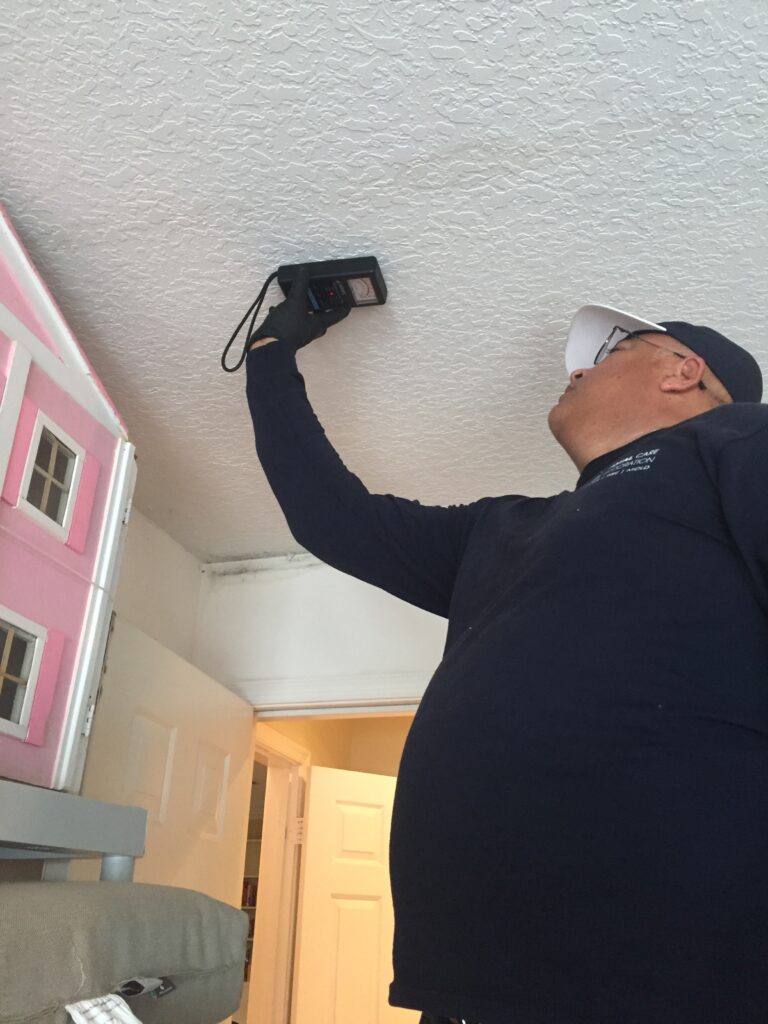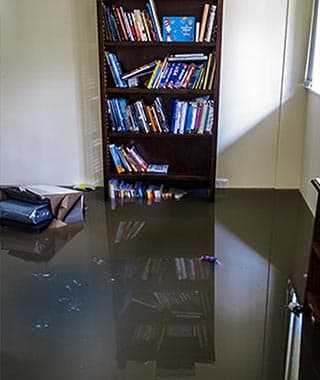Introduction
Dealing with water damage at home or your workplace can be really stressful. It can ruin walls, floors, and even lead to health risks like mold. This is why it’s important to act fast. In this blog post, we will break down the water damage restoration steps you need to know to handle this problem, and why getting help from professionals can be a lifesaver.
Imagine a burst pipe or a severe flood leaving your space wet and damaged. You might feel lost not knowing what to do first. That’s where this guide comes into play. Before rolling up your sleeves to clean and fix things, ensuring that everything is dried properly is crucial, though it might take a bit of time.
Steps for Water Damage Restoration
Fixing water damage is not just about cleaning up the mess; it involves a series of well-planned steps to make sure your place is as good as new. Here’s a breakdown of the water damage restoration steps:
- Check the Damage: Start by understanding how bad the damage is. Knowing this will guide your next actions.
- Find Where the Water is Coming From: Locate the source of the water problem to prevent more damage.
- Get Rid of the Extra Water: Remove all the standing water using buckets or a special water suction tool.
- Dry the Affected Areas: Use fans and machines that take moisture out of the air to dry the space thoroughly.
- Clean and Make the Area Germ-Free: Once everything is dry, clean and sanitize the place to prevent mold and bad smells.
- Repair and Rebuild: Fix damaged parts of your home, like replacing the flooring or fixing the walls.
Preparing for the Drying Process
Safety comes first. Before starting the drying process, ensure:
- The power is off to avoid electrical issues.
- There are no gas leaks.
- Your building is strong and not about to collapse.
In smaller cases, where only a room is affected, this preparation might not be necessary. Don’t forget to take photos for insurance purposes before drying begins.
Tools Used in the Water Damage Restoration Process
In restoring a space that has suffered water damage, a range of specialized equipment is deployed to efficiently manage moisture and maintain a healthy environment. Here we outline the vital tools professionals use during the water damage restoration steps:

- Detection Tools:
- Moisture Meters and Sensors: These tools are employed to measure the level of moisture in various materials, guiding technicians on whether a surface needs to be dried or replaced.
- Thermal Imaging Cameras: Sometimes, water can seep into places that are not visible to the naked eye. These cameras help in finding hidden moisture by detecting temperature variations in different surfaces.
- Air Movers:
- Industrial Fans: These are not your ordinary household fans. Industrial fans have higher power and speed to rapidly evaporate moisture from surfaces, aiding in a quicker drying process.
- Centrifugal Air Movers: These machines focus on directing airflow at specific wet areas, encouraging rapid drying of floors, carpets, and walls.
- Dehumidifiers:
- Desiccant Dehumidifiers: These machines use chemicals to absorb moisture from the air, effectively drying the environment and preventing mold growth.
- Refrigerant Dehumidifiers: Working similarly to air conditioners, these dehumidifiers cool the surrounding air to remove moisture, helping in drying the area effectively and preventing the warping of materials.
- Deodorizing Machines:
- Air Scrubbers: These devices filter the air to remove particles, chemicals, and gases that contribute to unpleasant odors, ensuring the air is clean and fresh.
- Ozone Generators: Using ozone gas, these machines neutralize bad smells and can even kill mold and bacteria, ensuring a safe and odor-free space.
- Foggers: Thermal and ULV (Ultra Low Volume) foggers can deodorize an area efficiently by converting deodorizing liquids into a fine mist or fog that penetrates deep into porous surfaces, removing stubborn odors.
- Generators:
- Portable Generators: In instances where power is unavailable, portable generators supply the necessary power to run the equipment, ensuring the restoration process remains uninterrupted.
- Inverter Generators: These generators not only provide power but do so while producing fewer noises and maintaining a steady flow of electricity, protecting sensitive devices from power surges.
Understanding the tools used can give you peace of mind, knowing that every step is being taken to restore your space diligently and with the right equipment during the water damage restoration process.
The Drying Process Detailed
Drying is a crucial step in water damage restoration. It is more than just letting things air dry; it includes checking hidden areas like attics where water might have seeped into insulation materials or stored boxes, causing unseen damage.
To dry your space well:
- Open windows for fresh air.
- Use large fans and dehumidifiers to speed up the drying.
- Check and dry hidden moist areas, like behind the wallpaper or under the floorboards.
Proper drying ensures your floors don’t warp and furniture doesn’t swell. It is a detailed process where every nook and cranny must be checked to prevent future problems.
Preventing Mold Growth
One of the pivotal steps in the water damage restoration steps is staunchly focusing on preventing mold growth. Mold not only compromises the structural integrity of your property but can also pose severe health risks, including respiratory issues and allergies. Here we break down the vital measures that can help in averting mold growth:
- Prompt Water Removal:
- Quick Response: The sooner you start the water removal process, the lower the chances of mold growing. Mold can start growing in as little as 24-48 hours in damp conditions.
- Thorough Drying:
- Dehumidifiers: Utilize high-efficiency dehumidifiers to remove excess moisture from the air, an essential step in preventing mold growth.
- Air Circulation: Enhance air circulation with fans to speed up the drying process, focusing on damp areas to prevent mold spores from settling and growing.
- Cleaning and Sanitizing:
- Antimicrobial Treatments: Apply antimicrobial treatments to affected areas to prevent mold growth at the outset.
- Proper Disposal: Dispose of materials that cannot be salvaged promptly to prevent them from becoming a breeding ground for mold.
- Moisture Control:
- Ventilation: Ensure that spaces prone to accumulating moisture, such as bathrooms and kitchens, are well-ventilated to prevent mold growth over time.
- Dehumidification: Maintain a regular use of dehumidifiers, especially in humid climates, to control the moisture level in your home or business establishment.
- Inspection and Maintenance:
- Routine Inspections: Regularly inspect potential trouble spots for signs of moisture or water damage and address issues promptly to prevent mold growth.
- Maintenance: Engaging in routine maintenance of your property, including checking roofing, plumbing, and HVAC systems, can prevent water damage and subsequent mold growth.
- Seek Professional Guidance:
- Expert Consultation: If unsure about the extent of water damage or potential mold growth, consult with professionals who specialize in water damage restoration to guide you in taking appropriate measures.
By adhering to these guidelines and keeping a vigilant eye on the moisture levels in your property, you can successfully prevent mold growth, safeguarding the health of your living or working environment and maintaining the structural durability of the space.
If you need help with a mold test of mold remediation please reach out to us.
Conclusion
Fixing water damage is a big job with many steps involved. From checking the damage to drying and repairing, each step is crucial. To make this process less stressful, consider getting help from professionals like us at Total Care Restoration.
We are certified experts in Miami, ready to help you at every step of the water damage restoration steps ensuring a safe and hassle-free restoration, while also assisting in billing your insurance company for our services. Don’t shoulder the burden alone; we are here to help you bounce back from water damage with ease and expertise.









